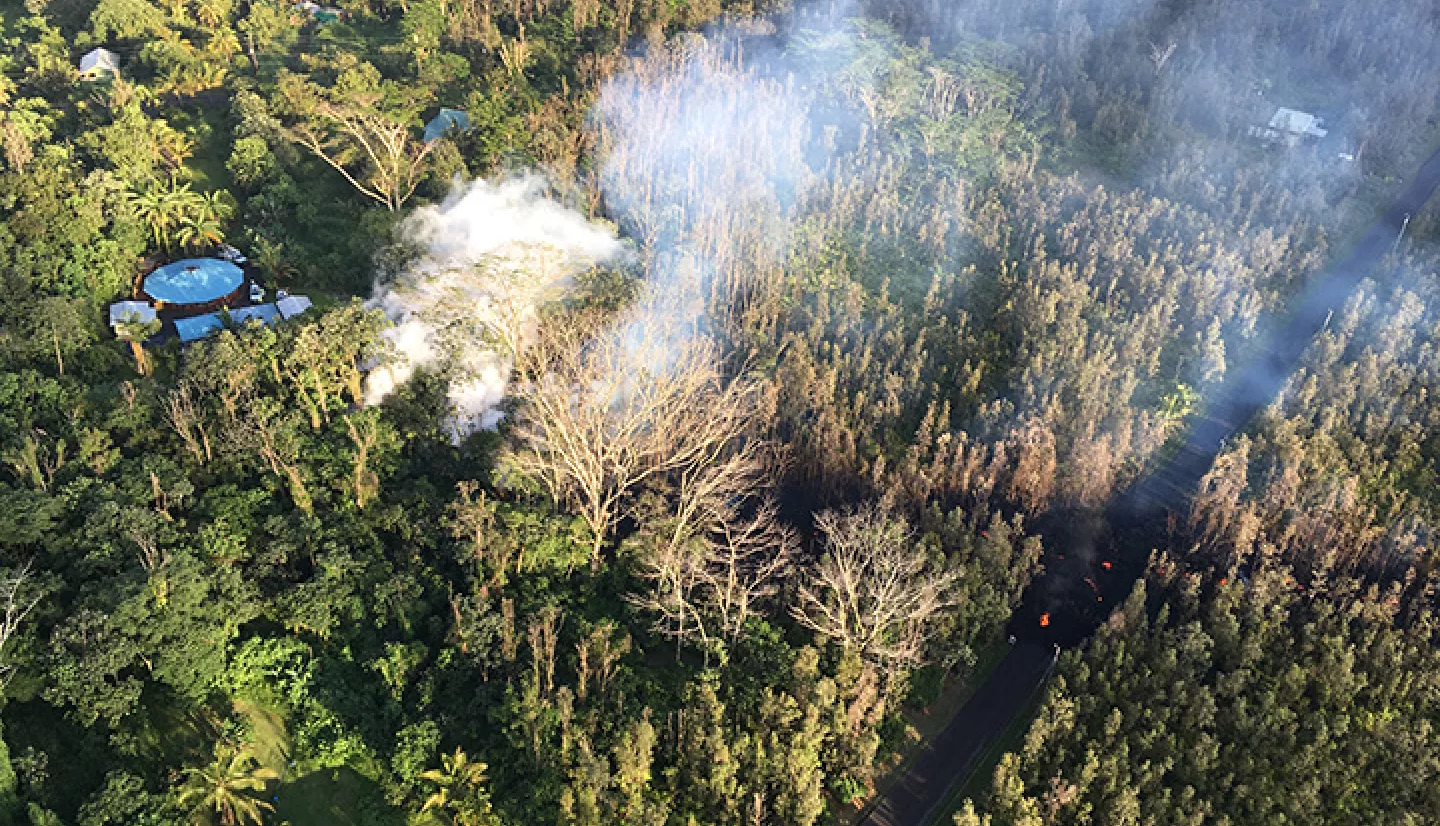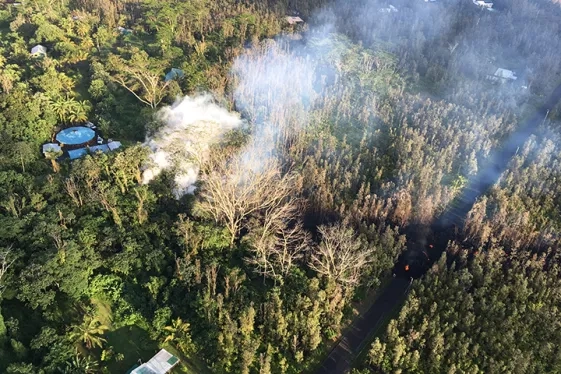Sulfur dioxide, or SO2, occurs naturally in magma. When molten rock is deep underground, the high pressure keeps the gas dissolved. But as magma rises toward the surface, pressure decreases. This can cause an eruption zone to see an increase in SO2 emissions. Satellites observed exactly that during the May 2018 eruption of Kilauea in Hawaii.
Ashley Davies, a volcanologist at NASA’s Jet Propulsion Laboratory, said the process is like “what happens when a bottle of soda is opened.”
“The bubbles of sulfur dioxide ... begin to rise through the liquid magma and concentrate in the magma closest to the surface, so the first lava to erupt is often the most volatile-rich,” Davies said. “There’s usually an increase in sulfur dioxide output right before lava reaches the surface, as the gas escapes from the ascending magma.”
During the eruption, multiple sources combined to create a plume containing SO2. Sensors on the Ozone Mapping Profiler Suite (OMPS) onboard the Suomi NPP satellite detected a spike in SO2 levels on May 5, a few days after the new fissures opened up.
Scientists are interested in observing SO2 plumes in part because this gas can be toxic. In the early days of the eruption, trade winds pushed the toxic gas offshore. But as the eruption went on, nearby residents faced serious problems with air quality
More information available at the NASA Earth Observatory story Sulfur Dioxide Leaks from Kilauea.




